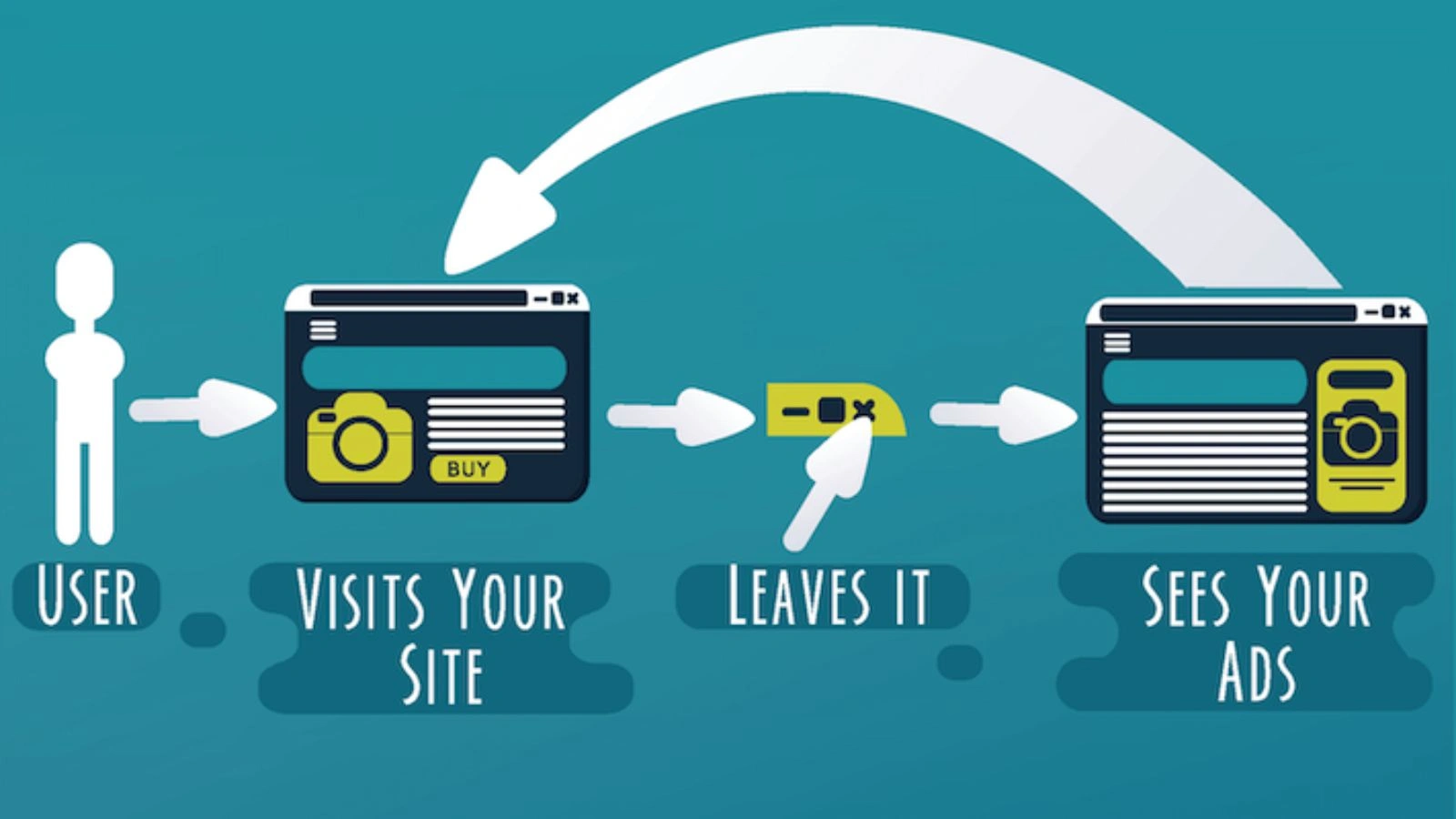Why Is Contextual Advertising Important For Marketers?
Change is here, & marketers have no choice but to adapt.
For many years, contextual advertising strategies have depended heavily on user data, tracking behaviors, monitoring clicks, and analyzing purchase histories.
However, as data privacy becomes increasingly important and third-party cookies face extinction, this model becomes less effective. What worked in the past may not be viable in the future.
This shift has led many to wonder: How can we ensure our ads remain relevant as targeting rules evolve?
This change has sparked a lot of interest: How can we keep our ads relevant as the rules for targeting continue to change?
That’s the premise of contextual advertising, a strategy that aligns your message with the content your audience is already paying attention to.
Rather than relying on behavioral profiling, contextual ads are delivered based on page-level context, like keywords, topics, or themes.
In this blog, we will explain why contextual advertising is becoming an essential marketing strategy. Let’s learn how it works and why it matters more than ever.
Don’t feel like reading? We’ve got it in audio.
What Is Contextual Advertising?
Contextual advertising is a targeting method that places ads based on the content of a web page, not the behavior or identity of the person viewing it. It’s about relevance, not surveillance.
Here’s how it works: imagine someone reading an article about long-distance running. A contextual ad for running shoes, hydration packs, or marathon training plans would naturally appear alongside that content. The ad aligns with the subject matter, offering value without feeling intrusive.
Unlike behavioral targeting, which relies on tracking user actions across websites, contextual advertising focuses on where the ad appears, not who’s seeing it. This makes it not only more privacy-compliant but often more welcomed by users since the ad complements what they’re already interested in.
It’s a return to advertising fundamentals: right message, right place, right time.
As data collection becomes more restricted, contextual targeting advertising is regaining traction, offering a smarter way to stay relevant without crossing any lines. With the right platforms, marketers can identify which contextual placements are driving real results and replicate those patterns across campaigns.
So, how does this approach differ from behavioral targeting? Let’s break it down.
How Contextual Ads Work Compared To Behavioral Targeting?
Both contextual and behavioral targeting aim to put relevant ads in front of the right people.
But how they do it and the implications for user privacy, campaign control, and long-term effectiveness are vastly different.
Contextual Targeting: Content-Driven Placement
Contextual analysis of the content of a webpage, its keywords, topics, and overall theme, and serves ads that match the subject matter.
For example, a user reading a blog post about healthy recipes might see an ad for plant-based meal kits. The ad fits naturally into the context of the content, without needing to know anything about the reader’s browsing history.
What powers it? Page-level analysis, keyword matching, and semantic context.
What does it respect? User privacy and intent.
Why does it work? It aligns with what the user is already thinking about at that moment.
Behavioral Targeting: Data-Driven Profiling
Behavioral targeting takes a different route. It tracks users across sites, builds profiles based on clicks, searches, purchases, and browsing behavior, and then delivers ads tailored to those historical patterns. That’s how someone who searched for office chairs last week might see an ad for one while reading the news today.
What powers it? Cookies, user IDs, tracking pixels.
What are its risks? Privacy pushback, ad fatigue, and relevance drop-off over time.
Why is it declining? Regulations (like GDPR, CCPA) and browser changes are making it harder to execute.
Why This Shift Matters For Marketers
With privacy-conscious users and tighter data restrictions, marketers need alternatives that deliver performance without relying on personal data trails. Contextual ad targeting does exactly that, and it does so without compromising reach or relevance.
With this data, you will understand what’s trending, why it’s working, and where your brand should appear next.
Recommended for you
Behavioral Targeting: It’s Working & Mind Blowing Benefits
The Ultimate Guide to Programmatic Native Advertising
How Contextual Targeting Works?
Contextual target might seem simple: match ads to content. But behind that simplicity is a sophisticated process that ensures ads appear where they make the most sense and deliver the strongest results.
Here’s how it typically works:
1. Content Scanning and Classification
The first step involves analyzing the content of a webpage using keyword recognition and semantic analysis. Advanced systems go beyond just looking for specific terms, they understand the meaning and tone of the content to categorize it accurately.
For example, an article mentioning “jaguar” could be about the animal or the car. Semantic targeting helps distinguish between the two.
2. Topic Categorization
Once the system understands the content, it assigns it to predefined categories, anything from “fitness and wellness” to “enterprise software” or “travel hacks.” This classification allows advertisers to target by theme or niche instead of individual users.
3. Ad Matching and Placement
Based on the selected categories or keywords, ads are matched and placed on pages that align with the advertiser’s goals. This ensures relevance, improves visibility, and increases the likelihood of engagement.
4. Brand Safety Filters
Most contextual tools also include brand safety measures, screening out content types that advertisers may want to avoid (e.g., violence, political content, adult themes). This gives marketers more control over where their ads appear, without compromising reach.
Behavioral Targeting Vs. Contextual Targeting: Which Is The Best?
Ultimately, the decision between contextual and behavioral targeting depends on your campaign goals, privacy considerations, and audience preferences.
Here’s a quick comparison to help you decide which one is best for your business:
With privacy concerns and new rules on the rise, contextual is becoming the smarter, more ethical choice. Tools like PowerAdSpy, a powerful display ad spy solution, help you find the best ad placements so your message reaches the right audience in the right context.
Why Contextual Ads Are So Important?
Contextual advertising is not just a trend, it has become a key strategy for many marketers seeking cost-effective, privacy-conscious ways to reach relevant audiences. When combined with programmatic native advertising, it offers even greater precision by delivering tailored content in a format that seamlessly fits within the user’s browsing experience.
Here are the key benefits that make it a powerful choice in modern contextual advertising.
1. Improved Relevance Without Encroaching on Privacy
As digital privacy regulations tighten, advertisers must pivot to methods that don’t infringe on user privacy.
Contextual advertising addresses this challenge by delivering highly relevant ads based on the page content, without collecting personal data. Also, it ensures that marketers can still target the right audience while respecting preferences, a critical factor in the market.
2. Improve Engagement Rates
Because contextual advertising is based on the content a user is actively consuming, they are naturally more relevant and timely.
This often leads to higher engagement rates compared to traditional advertising. Users are more likely to interact with ads that match their current interests, increasing the chances of clicks, conversions, and overall engagement with your brand.
For example, an ad for a new cooking class might resonate more with someone reading a blog about healthy recipes than someone on a sports website.
Contextual uses this natural alignment, leading to more meaningful interactions.
3. Stronger Brand Safety and Control
Contextual ads provide greater control over where your ads appear. With behavioral targeting, ads might show up on unexpected or unwanted sites, leading to a mismatch between your brand’s values and the content it’s associated with. Contextual advertising eliminates this risk by only placing ads on content that fits your brand’s tone and audience.
Additionally, brand safety filters allow marketers to exclude categories or types of content that could harm their reputation. This gives you confidence that your ads will only appear in suitable environments.
4. Better Cost Efficiency
Since contextual advertising targets users based on what they’re currently reading or watching, it tends to produce better results in terms of cost per click (CPC) and cost per acquisition (CPA). Without the reliance on personal data or complex tracking systems, contextual ads offer a more straightforward and scalable approach to reaching the right audience, ultimately improving your ROI.
This is especially important for brands working with smaller budgets or those looking for a cost-effective advertising solution that doesn’t compromise on reach or impact.
5. Adaptability & Long-Term Viability
With the imminent phasing out of third-party cookies and growing concerns around data privacy, contextual advertising stands out as a sustainable option. While behavioral targeting relies heavily on tracking cookies and user data, contextual advertising is independent of these factors. This makes it a future-proof advertising strategy that can adapt to evolving privacy standards.
PowerAdSpy allows you to maintain a competitive edge by delivering detailed insights into contextual advertising strategies across diverse industries.
You can monitor what’s working in your sector and adjust your approach in real time, without worrying about compliance issues.
6. Increased Trust & Positive Brand Perception
Consumers are increasingly concerned about how their data is being used, and a positive user experience goes beyond relevance. When users see ads that naturally fit with the content they’re reading, it builds trust in the brand behind those ads. Advertisers who use contextual ads show they understand what their audience cares about, fostering a stronger relationship and increasing the likelihood of conversions.
7. Real-Time Flexibility & Immediate Impact
Contextual ads are a great way to tap into real-time events or trends. For instance, if there’s a surge in interest around a particular topic or event, marketers can quickly place contextual Campaigns is align with this surge, capturing a larger audience in the process. This flexibility ensures that your campaigns can capitalize on trending topics, resulting in immediate impact.
How PowerAdSpy Makes Contextual Advertising Work For You?
PowerAdSpy is a smart ad intelligence tool that helps marketers discover high-performing ads across multiple networks. From tracking contextual placements to analyzing competitor strategies, it gives you the insights you need to craft data-driven, effective campaigns—faster and with less guesswork.
This tool also shows you exactly which ads are working (and why), so you can see what your competitors are doing right and do it even better.
The tool provides real data on the best-performing placements and trends.
That means you can fine-tune your campaigns to match what converts, saving time and boosting results.
Here are some notable features
Search Algorithm: PowerAdSpy’s search algorithm makes it easy to find exactly what you are looking for.
By searching for popular keywords, phrases, or terms within ads, you can quickly narrow down your results.
Once you’ve found ads that match your standards, you can sort them by date, shares, likes, and comments to identify the top-performing ads that can inspire your campaign.
Bookmark The Best Ads: As you explore, you will likely come across several ad concepts that catch your eye.
With just a click, you can bookmark these ads and save them to your personalized Ads Inventory.
Narrow Down Your Searches: PowerAdSpy offers powerful filtering options that allow you to search for ads based on niche keywords, specific advertisers, or even competitor domains.
Complete Visibility: With PowerAdSpy, you don’t just get a glimpse of ad data; you get full visibility. You can access live ad posts directly from the platform and check out real-time engagement and audience feedback.
Filter By Ad Positions: This feature gives you the ability to segment ads based on their position—whether they’re in the News Feed or on the side.
You can research and analyze which ad positions are generating the best conversions in your niche, helping you make more informed decisions for your campaigns.
Contextual advertising is not just the ‘nice guy’ of digital marketing – the one that plays by privacy rules. It’s a seriously smart way to connect with customers in today’s crowded market.
Think about it: your ads show up in exactly the right places, at the right times when people are most open to your message.
That’s not just safe marketing – that’s effective marketing
Final Thoughts
Let’s face it – between tightening privacy laws and savvier consumers, marketers are being forced to rewrite the rulebook on targeting. That’s why so many are turning to contextual advertising. It’s not just the ‘politically correct’ choice – it works.
You get hyper-relevant ad placements without creeping people out, strong performance without privacy headaches, and all the flexibility of modern targeting without technical nightmares.
But here’s the catch: contextual advertising isn’t magic.
To make it sing, you need to know which content environments drive action. Which topics, which page types, and which placements? What are your competitors doing in these spaces? That’s the difference between just running contextual Promotions and running them successfully.
This is where PowerAdSpy changes the game. It’s like having X-ray vision into what works in contextual advertising right now. You’ll see:
- Exactly which content contexts are driving conversions (not just clicks)
- How competitors are leveraging contextual placements
- Real engagement data to separate passing trends from lasting strategies
The bottom line? Contextual advertising is the future, but only if you do it with your eyes wide open. PowerAdSpy gives you that clarity.
Frequently Asked Questions
1. Is contextual advertising suitable for B2B brands, or is it more effective in B2C?
Contextual advertising works for both, but the approach differs. B2C campaigns often focus on high-traffic content and emotional triggers, while B2B marketers can leverage niche industry sites, trade publications, and thought leadership content to align ads with professional interests and buying intent.
2. How does contextual advertising support brand safety?
Since contextual focuses on placing ads based on the content of the page, not user behavior, it gives advertisers more control over where their ads appear. Most platforms offer category exclusions (e.g., violence, politics, mature content), helping avoid placements that could damage brand reputation.
3. Can contextual advertising help with remarketing efforts?
While traditional remarketing relies on cookies, contextual ads can complement those efforts by reaching similar audiences through related content, even after cookies are removed. For example, if someone reads about “email marketing automation,” a contextual ad on CRM tools can still stay relevant.
4. What budget should I set for a contextual ad campaign?
There’s no one-size-fits-all budget, but contextual ads are often more cost-efficient than behavioural ones due to less competition for hyper-targeted placements. Start small, test different topics and placements, and scale based on performance.













